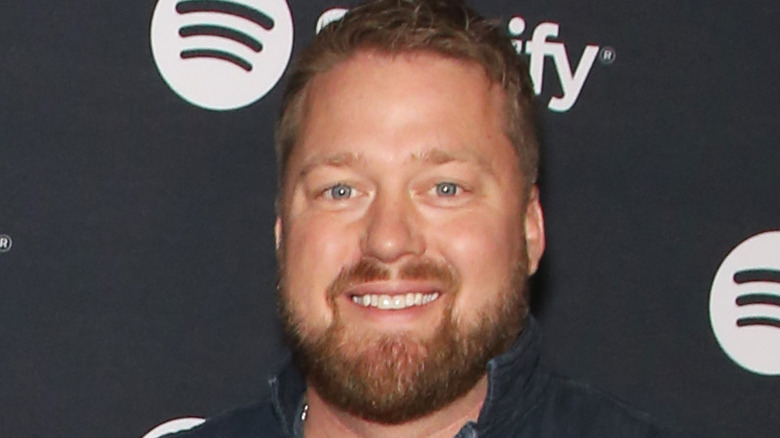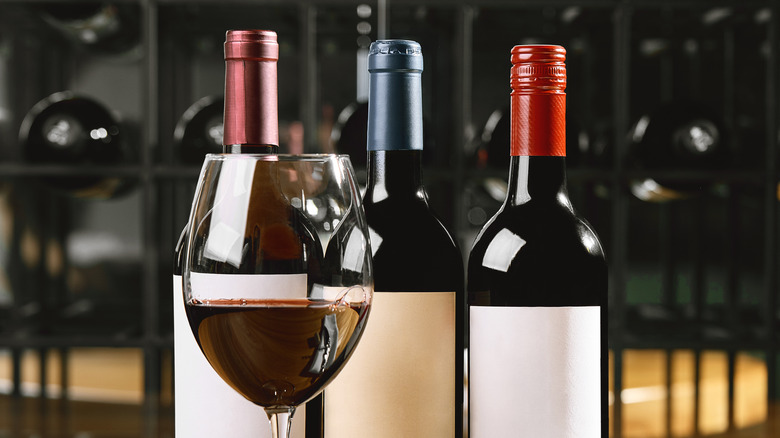Final Table Winner Tim Hollingsworth Explains How To Pair Wine The Correct Way - Exclusive
Chef Tim Hollingsworth knows a thing or two about food and wine pairings. This is hardly a shock, considering he is the mind behind upscale Downtown Los Angeles restaurant Otium, where one can enjoy dishes like a 32-ounce tomahawk steak, a braised lamb neck, Astrea Kaluga caviar, duck croquette, or other foods that simply beg to be paired with a great glass of vino.
Don't get him wrong — Hollingsworth is about as non-snobby as the chef of an award-winning modern restaurant can be. For him, wine is not something to be conspicuously swirled and shrewdly remarked over, but rather it's a flavor component of the meal, albeit one this former construction worker who grew up in a religious teetotaling family can't really imagine living without.
During an exclusive Mashed interview, we asked Chef Hollingsworth how to choose the right wines to pair with the foods you'll be serving and enjoying. There are two basic things to do, the chef says. First, don't worry so much about all the preconceived notions. "I think that people hone in too much on wine pairings," he explains, "and understanding that: 'Oh, this specific wine is going to go with this, or white wine with fish, and red wine with meat.' There's plenty of ways to cook fish and cook red wine. And there's plenty of ways to cook meat that are more white wine friendly, especially poultry."
How do you choose the wines themselves? That brings us to point number two, and it's a fun one: experiment.
Finding the best wine for your meal
Ultimately, the best wine to pair with a meal is any wine you are going to best enjoy with said food, and the only way to really know that is by tasting the wine yourself.
"People get intimidated and people get hung up," Tim Hollingsworth says, "and I think that if I was to offer anybody advice, it'd just be [to] open [a bottle] up and try it. Open it up and try it with what you're doing, and think about the flavor, think about what's reacting in your mouth, and think about why classic pairings are classic pairings. Why are you drinking Chablis with seafood? Why are you having a red wine with a steak, or a big Cabernet with a steak?" The answer? Because those pairings work. And they're a good starting point, as long as you're willing to break ranks and explore later.
"It's like you're trying to build up that repertoire and understand... specific flavor profiles that you get from different grape varietals of different regions [with specific] foods," the chef adds. A good way for those not up on their wine knowledge to see what works is to start with a food you already know well. "For me, it's ... that roasted chicken," Hollingsworth says. "It's like you want to create that roasted chicken dish, have it with Pinot noir. What do you think? Have a Grenache, what do you think? Maybe you're doing chicken with poached apricots, maybe you want to have it with a white wine now, and exploring how the flavor combinations work and why they work in specific ways, and being open to it, because what you are going to get from a glass of wine is going to be different from what I'm going to get from a glass of wine, based on our tastes and our smells and our experiences."
Looking for a great wine resource? Hollingsworth trusts Wine Insiders.

